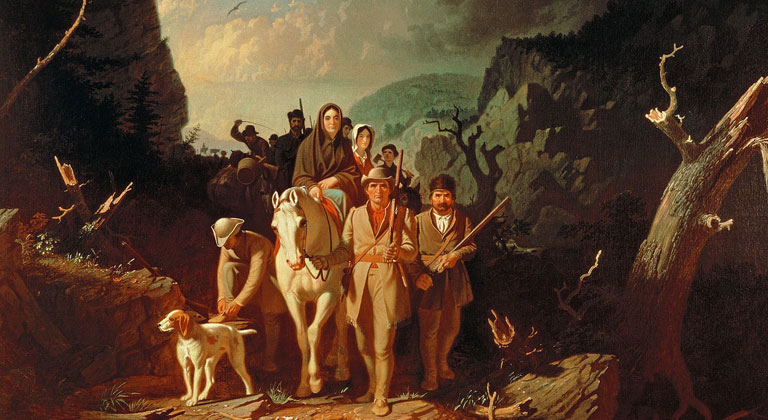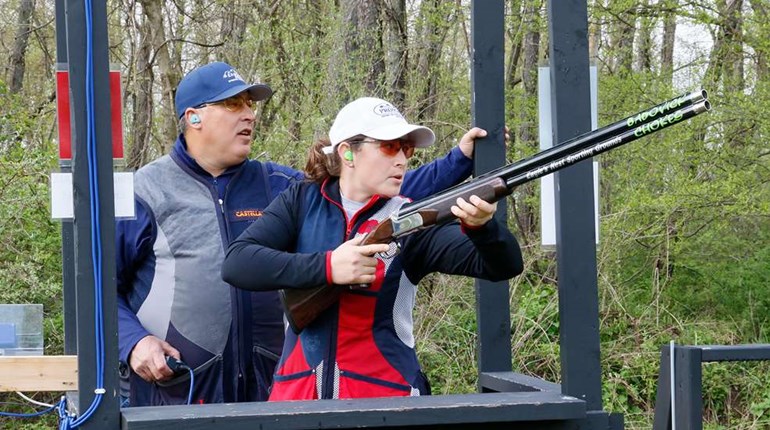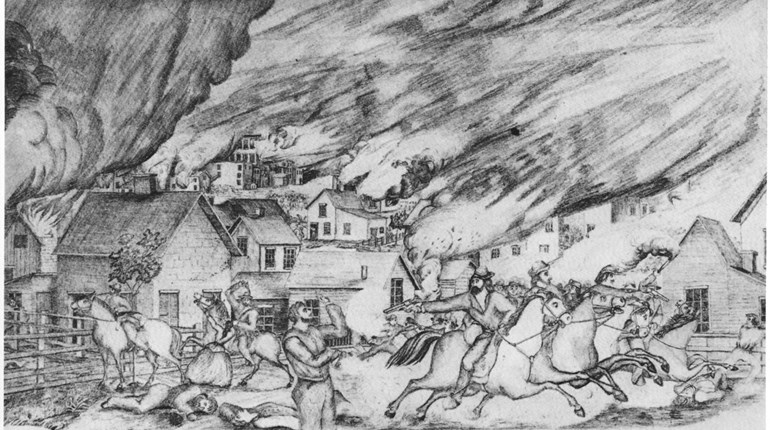
There is no more famous early-American frontiersman than Daniel Boone, but even given his great skills as a hunter and woodsman few realize that he was captured by Indians—more than once!
Born in Pennsylvania in 1734, Boone first saw what the Shawnees called kan-tuck-ee in the late 1700s. No one Native American tribe claimed that land immediately south of the Ohio River, but several considered it their hunting grounds. In 1769, a sub-chief of the Shawnee—Captain Will—caught Boone and five others of his party hunting and trapping in what one day would become Kentucky. In the ensuing skirmish, one of Boone’s men was killed and Boone and the other four frontiersmen were taken captive.
After being held for a week and having much of their equipment and all of their furs confiscated, Boone and his companions were released with this stern warning from Captain Will. “Now, Brothers, go home and stay there…Consider us to be the stinging bugs who guard their nests. If you are so foolish as to come here again, you may be sure the wasps and yellow jackets will sting you severely.”
Did Daniel Boone heed the warning? Hardly. Those game-rich lands he had seen were just too much of a temptation. Boone repeatedly returned to Kentucky to hunt and trap before finally settling there with his family, founding the settlement known as Boonesboro. But that decision cost him dearly in blood, as two of his sons were killed during future Indian battles.
Boone’s most well-known Indian captivity occurred in 1778, while he was with a group of some 30 men at a springs known as the Blue Licks. Salt was a necessity of the frontier, needed for preserving meat, and highly valued. It was made by boiling down the salt-rich waters of certain springs, the process taking more than 100 gallons of water to produce just one gallon of salt.
Even though Boone was the leader of the group, he chose to not participate much in the actual salt-making. Rather, he preferred hunting, providing venison and other wild meats for the salt-makers. It was during one of his hunting forays away from the rest of the men that he was surrounded by 100 Shawnee warriors, led by Blue Jacket. The Shawnee leader gave Boone a choice: Surrender, along with all of your men, or all of you will be killed.
Boone wisely capitulated, and the salt-makers were marched north from Kentucky, through the Ohio country, to Detroit where they were sold to the British Governor Henry Hamilton. Known as “The Hair-Buyer” for his eagerness to purchase frontiersmen’s scalps as well as live prisoners, Hamilton paid more for prisoners. During the previous year alone (1777), the Indians had brought Hamilton 129 scalps and 77 prisoners.
But even though Hamilton offered the Indians a large amount of money for Boone, he was not sold. The Shawnees were so proud and pleased to have captured this famous frontiersman that he was not for sale. In fact, the tribe’s chief, Black Fish, soon had Boone adopted into the tribe, giving him the name Sheltowee, meaning Big Turtle.
Daniel Boone proved to be an excellent Shawnee. Always friendly and smiling, he was well liked by all in the large Indian village. He joined in the work, attended social gatherings, participated in shooting contests, and as a result was invited along on group hunting trips.
But there was deviousness behind Boone’s constant cheerful demeanor. His ultimate goal was always to return to Kentucky. He knew he would only have one chance to make good his escape—getting caught would mean certain, tortuous death.
Boone’s opportunity came soon enough. He caught wind that Black Fish and more than 400 painted warriors were planning to attack Boonesboro, and Boone knew he had to warn the fort. The next morning, Boone was sent outside the village to gather horses for the Indians, but instead chose one that looked fast, jumped on its back and took off south. He made the 160-mile trip to Kentucky in just four days, eating only one meal along the way. “I kilt a ‘coon and roasted it,” Boone said.
Black Fish and his many Shawnee warriors soon arrived at Boonesboro, besieging the fort. But Boone and more than 100 other frontiersmen had prepared well for the assault, and were able to withstand multiple attacks over 10 days. Eventually, the Indians simply gave up and left.
Surprisingly, just two days later, Daniel Boone was arrested by fellow officers, taken to nearby Harrodsburg, and tried for treason. He faced several charges, one of which stated that he had voluntarily surrendered the party of 30 salt-makers into captivity with no attempt at defense.
The court-martial board was made up of militiamen like Boone, and they quickly found him not guilty. The decision was read aloud by James Harrod, the founder of Harrodsburg.
“Daniel Boone, this board of court-martial finds you innocent of all charges brought against you and believes that not only did you act properly and with wisdom at all times, but that your actions undoubtedly saved Boonesboro and possibly other settlements from destruction. In view of this, it is the considered view of this board that you be elevated to the rank of Colonel of the militia.”
Daniel Boone would go on to play a pivotal role in the settling of Kentucky, yet when the Bluegrass State became too tame for him he moved his family farther west to Missouri. There he grew old with his wife, Rebecca, who preceded him in death in 1813. Boone himself passed from the pages of history in 1820, dying quietly at his son Nathan’s home at the age of 85.
Today, Daniel Boone National Forest in Kentucky is named for the famous frontiersman, as is the Sheltowee Trace National Recreation Trail that passes through it. No doubt, Daniel Boone would have been very pleased to know that.
Image: "Daniel Boone Escorting Settlers Through the Cumberland Gap" by George Caleb Bingham






































